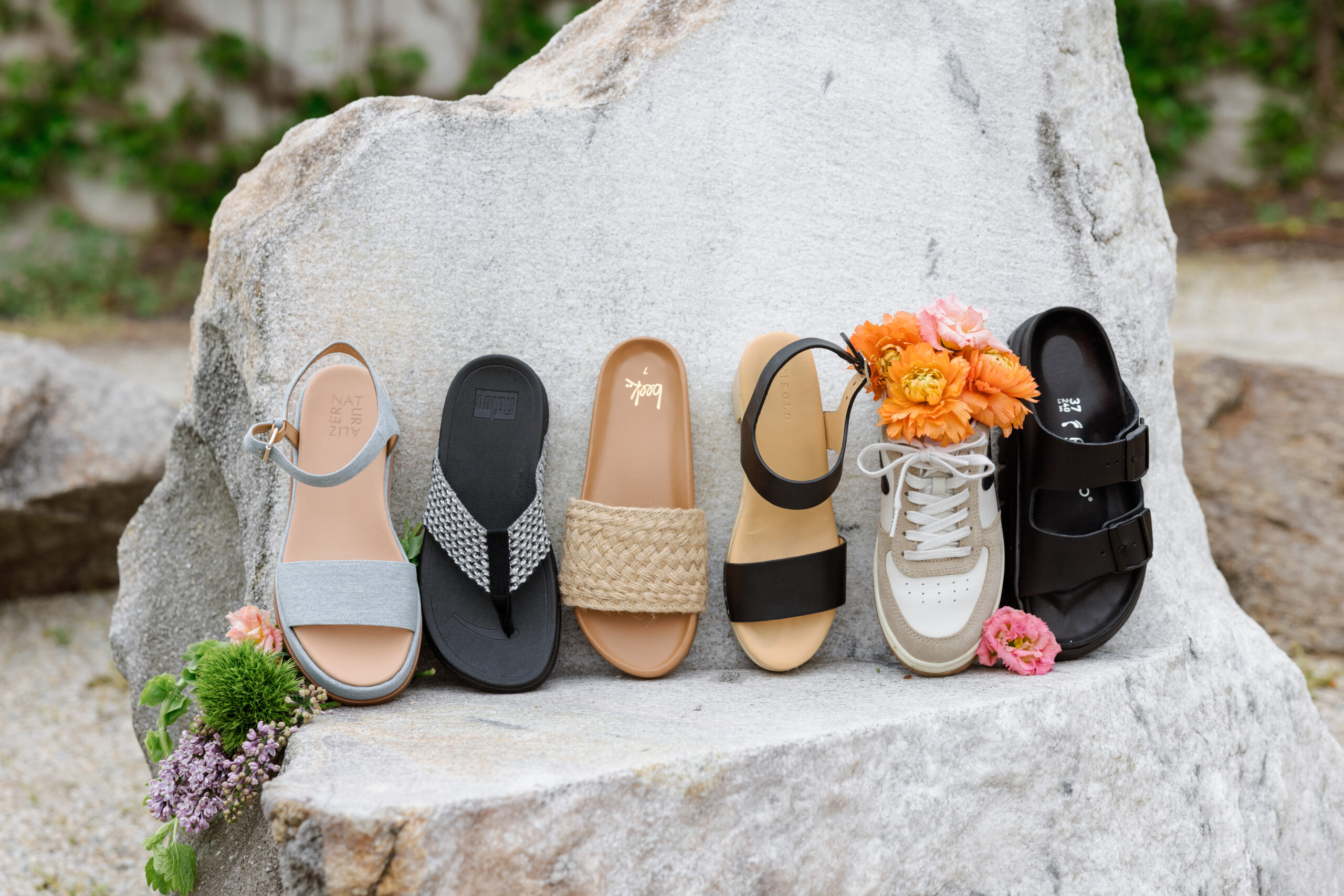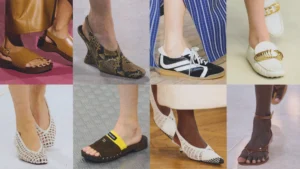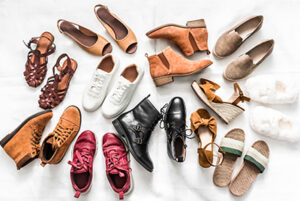No matter if it is for dancing at an elegant summer soiree or exploring an unfamiliar city on foot, proper footwear is key to protecting both feet and keeping them feeling great.
Poor-fitting shoes can contribute to foot injuries such as blisters and pinched toes, but comfortable and supportive footwear doesn’t have to look ugly.
Consider Your Lifestyle
No matter if your life is active or passive, shoes that support and protect the feet should always be part of the picture. Avoid thin sandals and flip flops which offer little support; opt for comfortable sneakers or classy flats instead.
When wearing your shoes to work or other formal events, choose dress shoes with either a heel or flats with an elegant look. Women wearing high heels should only do so for short periods as long-term use can contribute to foot pain, bunions, osteoarthritis and other health problems.
When shopping for shoes at the end of a long day, make sure you try them on at night as your feet swell during the day. If a shoe doesn’t feel comfortable on you then it probably isn’t suitable; make sure it covers your entire foot outline; one too small can lead to calluses and blisters while an adaptable bendable ball-of-foot design allows better range of motion while decreasing fatigue levels in feet.
Consider Your Occasions
Selecting the ideal shoes can make or break your look, whether for work, play or any other event. Elegant heels with intricate styles elevate an ensemble while giving an overall polished look – however if wearing heels for extended periods could prove uncomfortable consider lowering their heel height or opting for wedges to provide more stability and comfort.
Select shoes made of breathable materials to reduce foot odor and fungal infections while simultaneously keeping feet cool. Insufficiently cushioned footwear may lead to pain in the toe box, heel or arch area as well as pinching sensations or being too tight in width.
Always measure your feet when they are wearing socks and at their largest to get an accurate measurement. Since shoe sizes can vary between brands, it’s best to try on each pair before making your selections. Also consider testing shoes after wearing them all day long so that you can assess their comfort and how well they move with you.
Stay Ahead of Shoe Trends
The appropriate pair of shoes has the power to elevate any ensemble, increase confidence and even help correct posture – but choosing wrong can cause pain and discomfort.
Shoe trends come and go, but timeless classic styles remain fashionable. For Spring/Summer 25 look for mod Mary Janes and deco heels to bring heritage style into your wardrobe.
Woven leather shoes have long been an enduring trend. Crafted with natural fibers for an authentic aesthetic, woven leather can bring something special to any wardrobe – be it casually worn with jeans or dressed up for formal events with long lace boho dresses.
When purchasing shoes, comfort and fit should always come first. Shoes should feel good immediately upon putting them on and should not require “breaking in.” Wearing too small or too big shoes for your feet can cause numerous foot problems including bunions, hammertoes, squeezing and sore feet; to prevent this, follow these tips when purchasing new footwear:
Prioritize Functionality
Too many styles of footwear place too much emphasis on aesthetics over functionality, leading to painful foot conditions such as bunions, hammertoes and corns due to improperly fitting shoes. Footwear made with breathable materials allows your feet to breathe more easily while decreasing sweaty or smelly feet.
Toe box width is of great importance as too little room can lead to discomfort and eventually cause issues like hammertoes and ingrown toenails. Aim to leave at least half-an-inch of room between your longest toe and the front of the shoe for optimal results.
Whenever selecting footwear to meet the demands of both lifestyle and events, functionality should always come first. Long-wearing durable shoes crafted from quality material will save money over time while protecting feet from pain or injury. This is especially crucial for workers in healthcare industries such as food delivery services; prolonged periods of standing or walking require sturdy and supportive shoes in order to reduce pain, fatigue and increase posture, mobility and productivity.
Embrace the Winter Season
Shoes should fit properly from the moment you put them on. Resist any temptation to say, “Well, they’ll just break in.” Shoes that do not fit correctly can lead to blisters and other foot ailments; seek shoes with wide toe boxes with at least 1/2-inch of space between each toe and those that offer adjustable laces or hook-and-loop fasteners that provide support and allow you to tailor them specifically to your foot shape.
Good traction is crucial in winter footwear to prevent slips and falls on slippery surfaces, so if you plan on spending much of your time walking across ice and snow it’s wise to invest in boots with rugged soles and deep tread patterns.
There is a wide variety of footwear choices to suit both your needs and style preferences when it comes to fall and winter footwear. Take the time to shop carefully for shoes that will keep your feet warm and dry while complementing your wardrobe – you could easily find your ideal pair this season! With some careful planning and selection, finding your ideal shoes shouldn’t be hard at all!




